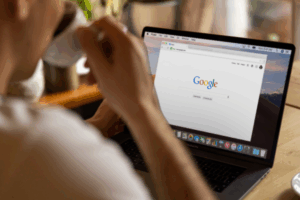
Programmatic SEO, sometimes called automated SEO, refers to any strategy that uses product attributes, keyword targets, or other input data to automatically generate new landing pages at scale. With the mainstream adoption of artificial intelligence, it’s also common to see AI-generated content on programmatically created landing pages.
You’ve likely heard that SEO is a long-term game. Or that it takes three to six months to see an impact from changes after they’re implemented on your site. While there are sometimes opportunities to make an immediate impact, the reality is that developing and executing an effective SEO strategy takes a lot of time and effort. However, that doesn’t stop site owners from attempting to “fast track” organic growth. Programmatic SEO is among the most popular methods.
Programmatic SEO can be an appealing option to save time and drive quicker results if your business has a small marketing team or limited bandwidth.
But is it an effective SEO solution?
In this article, we’ll explore five significant risks you could encounter by adopting a programmatic SEO strategy. You’ll see how to avoid them and ensure long-term organic growth.
Click on one of the risks below to jump to it or keep reading to learn more:
- Keyword cannibalization
- Dilution of sitewide SEO value
- AI-generated content
- URL changes
- Other technical issues
1. Keyword Cannibalization
An appeal of using AI to create new category URLs is that it appears to be an efficient way to create hundreds (if not thousands or tens of thousands) of new landing pages instantaneously with little effort.
That may seem like a great way to pursue long-tail keywords for very specific searches.
However, without checks in place to determine whether that page is unique enough from pre-existing pages to deserve a dedicated landing page, your new pages could siphon off important keyword rankings, traffic, and revenue from pre-existing pages.
This defeats the purpose of creating new category URLs in the first place!
Creating duplicate (or even similar) pages to what already exists on your site can confuse search engines, causing neither page to rank well and harming overall organic performance.
2. Dilution of Sitewide SEO Value
Depending on the rules you have in place for automated SEO, you might create pages that don’t provide customers with the helpful content and E-E-A-T that Google is looking to rank.
For example, let’s say you’re a shoe retailer and use your product attributes or tags to create pages. You could end up with a very specific landing page for Red Shoes Under $50.
Creating new pages that target long-tail keywords to acquire a few more customers may seem harmless. But the reality is that often, these pages aren’t helpful or optimized. This can dilute your site’s authority and its ability to rank in search engines.
Creating a lot of pages without SEO value reduces the average value of each page on your site. John Mueller, a Search Relations Team Lead at Google, says that one low-quality part of your site can impact the ability of the high-quality parts to rank organically:
“It might be that we found a part of your website where we say we’re not so sure about the quality of this part of the website because there’s some really good stuff here. But there’s also some really shady or iffy stuff here as well…and we don’t know how we should treat things overall.”
Learn more about Google Search’s helpful content system to ensure you’re writing content that actually helps your customers.
3. AI-Generated Content
With so many new landing pages being created by your programmatic SEO strategy, it’s tempting to use AI to generate “SEO optimized” content with seeded keyword targets.
It’s important to remember that the output of AI is only as good as the input. Though AI-generated content can save time by creating a first draft, we’ve seen that most of the time, content created by AI requires more of a manual lift than expected to ensure the content generated by AI is relevant, accurate, and helpful.
Learn more about Google’s guidance about AI-generated content.
4. URL Changes
If a landing page’s URL changes, even by one character, it’s viewed as a unique landing page by search engine spiders.
For example, www.yoursite.com/all-products is seen by spiders as a different URL than www.yoursite.com/all_products.
If you use AI to create new category landing pages and want the newly created pages to replace old landing pages, the URL structure may change. If that happens, then you need to appropriately redirect the old landing page URLs to the new AI-generated category URLs.
You’ll also need to ensure that the pages are self-canonical. The rel=”canonical” tag is within the source code and signals to search engines which URL is canonical – in other words, which URL variant your site indicates search engines should index.
Not doing so risks the SEO value your site obtained through the old URL and opens the door for rank cannibalization.
Redirecting Non-AI URLs
In most cases, 301 redirects are a simple and effective way to redirect one URL to another.
However, redirects serve a greater purpose than getting users to the right destination.
301 redirects preserve SEO value, i.e. organic sessions, keyword rankings, and acquired backlinks. They also signal to search engines that the redirected (old) URL should be removed from their index and that the redirect destination (new) URL should be indexed instead.
Failure to appropriately redirect old canonical landing page URLs to their newly created AI-generated URLs can create several issues for organic performance.
Two key issues to look out for are:
- Lost SEO value: Without a 301 redirect, the old URL doesn’t transfer its SEO value to new URL. The new URL could struggle to rank for keywords and appear in search results.
- Keyword ranking cannibalization: Not redirecting URLs means that there are duplicate versions of the same page competing to rank for the same keywords. As mentioned earlier, for every duplicate (or too similar) page, that page’s ranking potential is split.
5. Other Technical Issues
There are two other common technical issues that you’ll want to watch out for: improper canonicalization and spider traps.
Improper Canonicalization
It’s not enough to redirect old URLs to their newly created URLs. You need to update the new redirect destination URL to be self-canonical. This will signal to search engines that the redirect destination is the primary 200-status page with unique content that you want indexed.
AI & Spider Traps
Spider traps occur when your site creates a seemingly never-ending sequence of URLs. Often, this occurs due to layered navigation, filters, and sorting options.
AI may create a spider trap if the AI-generated pages are created through search filters and layered navigation options that use HREF links to navigate to the AI-generated page. Search engine spiders may then crawl an endless combination of filters and layered navigation that continues creating AI-generated URLs.
This can lead to wasted crawl budget, index bloat, and keyword cannibalization.
Is Programmatic SEO Worth the Risk?
At ROI Revolution, we embrace the ever-changing landscape of digital marketing and pride ourselves on continuous testing and smart utilization of tools to provide our clients with cutting edge full-service strategy.
It’s clear that AI is here to stay and is an invaluable tool to digital marketers.
Although automated SEO utilizing AI offers time-saving advantages and should be embraced, it must be used carefully and with expert human oversight.
AI is most beneficial to organic performance when employed through the lens of SEO authorities who are willing to continuously test their theories and results while making hands-on revisions to ensure the content is not only relevant, but helpful to users.
When working with ROI Revolution’s SEO team, you’ll have a group of SEO experts to guide your use of AI and avoid the common pitfalls of programmatic SEO. To explore the difference that comes with having a guide you can trust, book a meeting with our team now!
Sources
- Google Search Central Support, Helpful content and Google Search results FAQ.
- Google Search Central Blog, Google Search’s guidance about AI-generated content.





